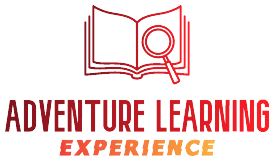In today’s fast-paced work environment, the importance of continuous learning cannot be overstated.Read More
Diversity in the workplace encompasses more than just ethnicity or gender; it includes a spectrum of experiences, skills, learning preferences, and career goals. Each team member brings a unique background, which influences how they absorb information and apply it in their roles. Recognizing this diversity is the first step toward creating an inclusive learning environment. A tailored learning path allows employees to learn at their own pace and focus on areas that require improvement or interest them. This individualized approach leads to higher retention rates and encourages employees to take ownership of their professional development, ultimately benefiting the organization as a whole. To customize learning paths effectively, organizations must first assess the specific needs of their teams. This can be achieved through surveys, interviews, and performance reviews. Gathering feedback directly from employees provides insights into their strengths and weaknesses, preferred learning formats (e.g., visual, auditory, kinesthetic), and areas where they seek growth. Additionally, organizations should consider the broader industry trends and emerging skills relevant to their field. Understanding what competencies are necessary for future success will help in shaping the curriculum and ensuring that the learning paths align with both individual aspirations and organizational goals. Once the needs are identified, organizations can begin crafting personalized learning paths. This process may involve curating a blend of training resources, including online courses, workshops, mentorship programs, and on-the-job training. Here are a few strategies to consider: To determine the effectiveness of customized learning paths, organizations should establish clear metrics and goals. Consider tracking employee performance before and after training, gathering feedback on the learning experience, and analyzing employee retention and satisfaction rates. Success is not only measured by the completion of courses but also by how well employees can apply what they’ve learned to their roles. By fostering a culture of continuous improvement and feedback, organizations can refine their training initiatives and ensure they meet the evolving needs of their diverse teams. Customizing learning paths to suit diverse team needs is an investment that pays dividends in employee engagement, skill development, and overall productivity. By understanding individual preferences and aspirations, organizations can create a more inclusive and effective learning environment. As businesses continue to evolve, embracing tailored training programs will be crucial for nurturing talent and driving long-term success.Understanding the Importance of Customization
Identifying Team Needs
Creating Personalized Learning Paths
Measuring Success
Conclusion

Customizing Learning Paths to Suit Diverse Team Needs
In today’s fast-paced work environment, the importance of continuous learning cannot be overstated.Read More
